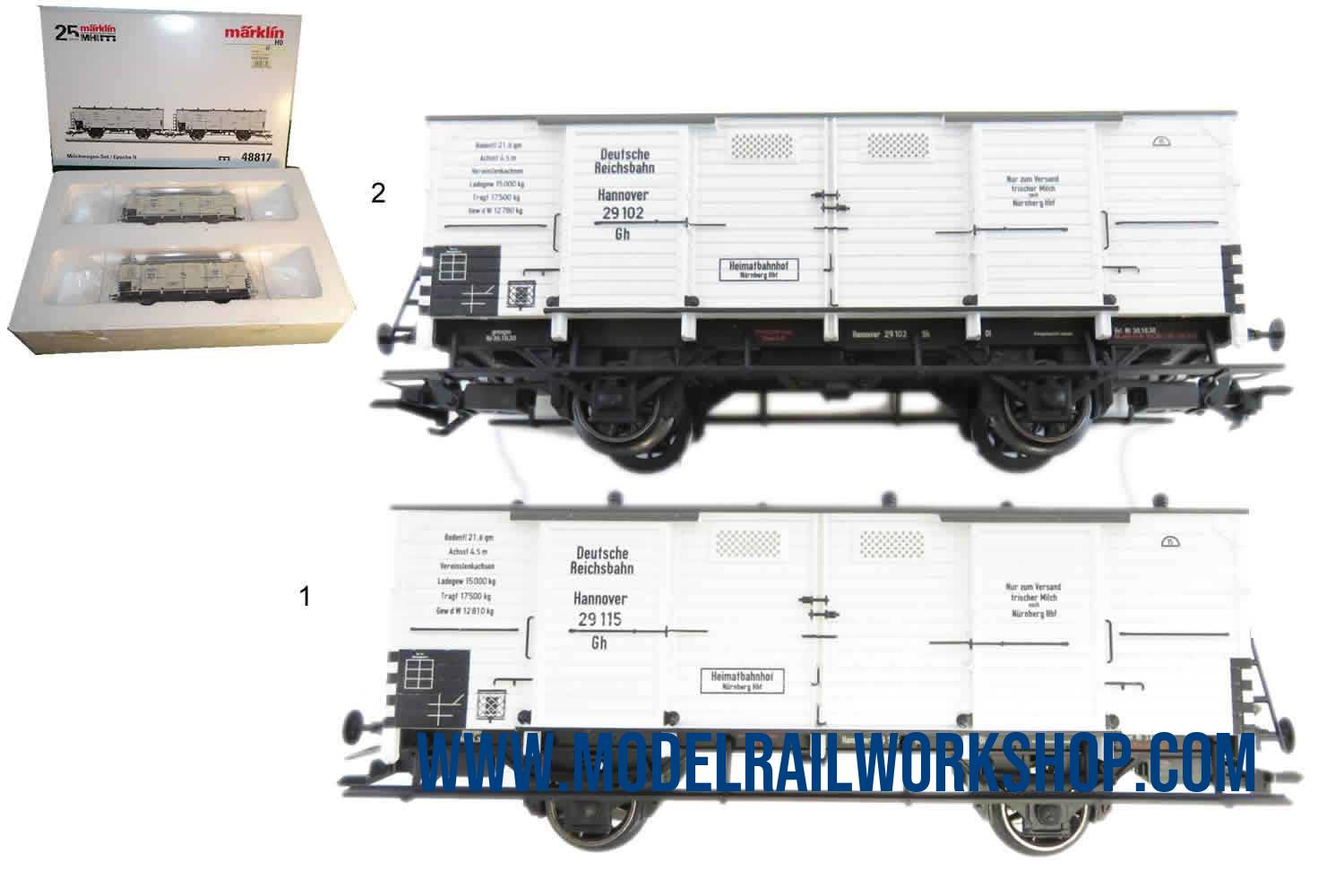
| KEY DATA | |
|---|---|
| Product Name | 48817 Boxcar set with two cars - Milk transport |
| Object type | Car-Closed box car |
| Product Line | Märklin MHI |
| Era | 1925-1945 (II) |
| Manufactured years | 2015-2016 |
| Type of housing | Synthetic |
| Length | 22.2 cm |
| Technology | - |
| Railway company | DE-DRG Deutsche Reichsbahn-Gesellschaft (1920/24-1937) |
| Märklin RRP (Year) | 70€ (2016) |
| Koll valuation (Year) | 55€ (2022) |
| Url to Märklin | Klick to GoTo www.maerklin.de |
| No | Obj.No | Obj.txt | Category | Description |
|---|---|---|---|---|
| 48817-1 | 29115 | Deutsche Reichsbahn Hannover - Nürnberg Hbf - Nur zum Versand frischer Milch | Gh | Box car - white - 11.5 cm |
| 48817-2 | 29102 | Deutsche Reichsbahn Hannover - Nürnberg Hbf - Nur zum Versand frischer Milch | Gh | Box car - white - 11.5 cm |
| Description | |
|---|---|